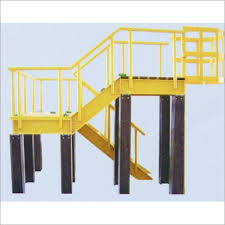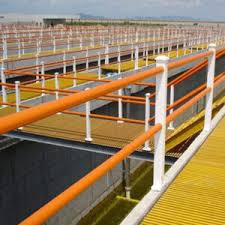- Home
- »
- Fibergrating's Blog
- »
- Summary for Fiberglass handrail and fencing systems
Table of Contents
Population of Fiberglass Hanrails and Fencing System
Fiberglass handrail and fencing systems, including guardrails, are becoming increasingly popular in various industrial, commercial, and residential applications due to their durability, low maintenance, and safety features.
FRP Material for Fiberglass Hanrails and Fencing System
These systems are primarily composed of Fiber-Reinforced Polymer (FRP), a material known for its high strength-to-weight ratio, corrosion resistance, and electromagnetic transparency. Such attributes make fiberglass an ideal alternative to traditional materials like wood, steel, and aluminum, especially in environments where exposure to harsh chemicals, extreme weather conditions, or electrical conductivity might pose significant risks.

The Versatility of Fiberglass Hanrails and Fencing System
The versatility of fiberglass allows it to be molded into a variety of shapes and sizes, catering to both standard and customized designs. This adaptability, combined with the material’s lightweight nature, simplifies transportation and installation processes. Notable our systems offer prefabricated sections that can be assembled on-site with basic tools, enhancing efficiency and reducing labor costs.
Safety of Fiberglass Hanrails and Fencing System
Additionally, these systems meet rigorous safety standards, including those set by OSHA and international bodies, and come in high-visibility colors like safety yellow to further ensure workplace safety.
Advantages of Fiberglass Hanrails and Fencing System
A key advantage of fiberglass handrail and fencing systems is their long-term cost-effectiveness. While the initial investment might be higher compared to traditional materials, the low maintenance requirements and extended lifespan of fiberglass products lead to significant savings over time. The material’s resistance to corrosion and UV damage ensures that these systems retain their structural integrity and appearance with minimal upkeep, making them a sustainable choice for long-term applications.
Challenge of Fiberglass Hanrails and Fencing System
However, the adoption of fiberglass handrails and fencing systems is not without challenges. The market faces scrutiny regarding the environmental impact of fiberglass production and disposal, with concerns over the presence of harmful chemicals in some composites. Manufacturers are increasingly focusing on sustainable practices, incorporating recycled materials, and exploring the use of bio-based resins. Nevertheless, ongoing advancements in technology and a growing emphasis on sustainability are likely to bolster the adoption of fiberglass systems in the future.

Comments
Technological Advancements of Fiberglass Beams
Frequently Asked Question
Fiberglass systems offer superior durability, low maintenance, corrosion resistance, high strength-to-weight ratio, and electromagnetic transparency, making them ideal for environments with harsh chemicals, extreme weather, or electrical conductivity risks.
Although the initial investment may be higher, fiberglass systems require minimal maintenance and have an extended lifespan. Their resistance to corrosion, UV damage, and other environmental factors reduces the need for frequent repairs or replacements, resulting in significant savings over time.
Yes, these systems meet rigorous safety standards, including those set by OSHA and international bodies. They are available in high-visibility colors like safety yellow to enhance workplace safety.
The primary challenges include concerns over the environmental impact of fiberglass production and disposal, particularly regarding the use of harmful chemicals in some composites. However, manufacturers are increasingly adopting sustainable practices, such as using recycled materials and bio-based resins.
